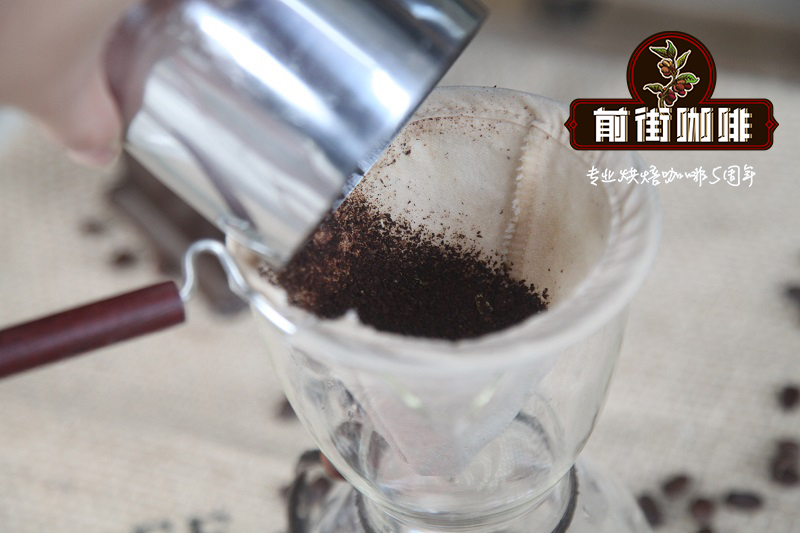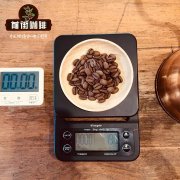Introduction to the production process of Indian style soiled coffee beans. What is the taste of monsoon Malaba coffee?

Professional coffee knowledge exchange more coffee bean information please follow the coffee workshop (Wechat official account cafe_style)
Old Coffee, are you nostalgic? I am.
After four months of "wind stain" treatment, the sea breeze blew, and the green beans finally turned golden. What has changed is not only seen by the naked eye? How do you know what traces of time are without a sip?
The source of Indian wind-soaked beans
Wind-stained coffee is a new flavor created inadvertently. In the 17th and 18th centuries, India shipped coffee beans to Europe by sailboat, which took six months. The raw beans were placed on the bottom of the barn and absorbed the moisture and salty taste of the sea (salty wet, OMG). The raw beans arrived in Europe and had deteriorated. The color changed from dark green to yellowish brown of rice. The sour taste of coffee almost disappeared, but it unexpectedly developed a strong nutty and shell flavor. A little Xuanmi tea (green tea + fried rice) flavor. Nordic people like this golden alternative Indian coffee very much. In 1869, the opening of the Suez Canal and the advent of steamships shortened the sailing time between India and Europe, but customers began to complain that Indian coffee was "tasteless", losing the charming yellow and nutty flavor of the past, and orders plummeted. Indian exporters began to study the solution. The original coffee shipped to Europe took more than half of the time to become "transformed" and lost its original flavor, so exporters thought of the salty and wet environment blown by the Indian ocean along the coast of Malaba in southwestern India every year from late May to September. After several experiments, it was made similar to the old golden coffee without acid, so it was named "monsoon coffee", commonly known as wind-stained coffee.
Production of weathered beans of Indian Coffee
The wind-stained coffee needs to be made with sun-dried beans, and the wind-stained factory faces to the west in order to catch the salty wet (salty x2.) monsoon from the southwest. Coffee beans are laid flat in the wind-soaked field, the windows are all open, and the wind stains can be put into the bag to a certain extent, but the coffee beans cannot be filled too full, and the coffee bags should not be piled too dense to avoid mildew, and it is time-consuming and labor-consuming to pour out coffee beans and replace sacks from time to time to avoid mildew. The weathering period is about 12 to 16 weeks, and after it is ripe, it has to be fumigated to drive out the weevil, and finally the beans are screened manually to pick out the failed beans that have not turned golden. After three to four months of wind stains, green coffee beans are twice as large in volume, reduced in weight and density, and have a moisture content of about 13% (in fact, the beans on the hands of matches are already very light, with an estimated moisture content of less than 9%), with significant changes in quality and quantity.
About the "taste" of Indian style-stained coffee beans
My feeling is that the taste spectrum is not as messy as in the legend, nor is it as mellow as rumored. "the smell of the ocean", which is consistent with the above author's point of view. Although beans are indeed born in the salty sea breeze, the taste really can not be drunk in the mouth, but lingering in the mind. I don't understand the taste of the ocean, but I can still feel the traces of time.
Generally speaking, Indian style soiled beans like to be described as "Xuanmi tea". I think "Xuanmi" is enough. I don't seem to notice the taste of "tea". Xuanmi, fried rice is also, if association is difficult, I'll tell you the taste of popcorn (please don't add cream). With regard to fruit acid, it is not acid-free, but there are.
On the right are washed beans, emerald green
The quality of beans is very soft, and there is more fine powder in the process of grinding beans. It is recommended that when grinding the powder, it is thicker than usual.
END
Important Notice :
前街咖啡 FrontStreet Coffee has moved to new addredd:
FrontStreet Coffee Address: 315,Donghua East Road,GuangZhou
Tel:020 38364473
- Prev

Indian boutique Robusta Sun Coffee beans how to drink _ Azad Hind Manor Black Deer Coffee Story
Professional coffee knowledge exchange more coffee bean information please follow the coffee workshop (Wechat official account cafe_style) [country] Indian coffee [manor] Azad Hind [variety] Robsta sun treatment [roasting process S] shallow roast] Azad Hind is a t-field of coffee war 140 km2, sitting in the wind, such as liny answer is aimawft no
- Next

Is the coffee beans of the Royal Robusta of India good? what does the Royal Grade of Indian Coffee mean?
For more information on coffee beans, please pay attention to the coffee workshop (official Wechat account cafe_style). In 1950, Robusta accounted for only 13% of the world's coffee production. In 2015, it was almost 45% on a par with Arabica. By 2030, Robusta will have 55% of the world coffee market, and he predicts that coffee consumption will be
Related
- Does Rose Summer choose Blue, Green or Red? Detailed explanation of Rose Summer Coffee plots and Classification in Panamanian Jade Manor
- What is the difference between the origin, producing area, processing plant, cooperative and manor of coffee beans?
- How fine does the espresso powder fit? how to grind the espresso?
- Sca coffee roasting degree color card coffee roasting degree 8 roasting color values what do you mean?
- The practice of lattes: how to make lattes at home
- Introduction to Indonesian Fine Coffee beans-- Java Coffee producing area of Indonesian Arabica Coffee
- How much will the flavor of light and medium roasted rose summer be expressed? What baking level is rose summer suitable for?
- Introduction to the characteristics of washing, sun-drying or wet-planing coffee commonly used in Mantenin, Indonesia
- Price characteristics of Arabica Coffee Bean Starbucks introduction to Manning Coffee Bean Taste producing area Variety Manor
- What is the authentic Yega flavor? What are the flavor characteristics of the really excellent Yejasuffi coffee beans?

